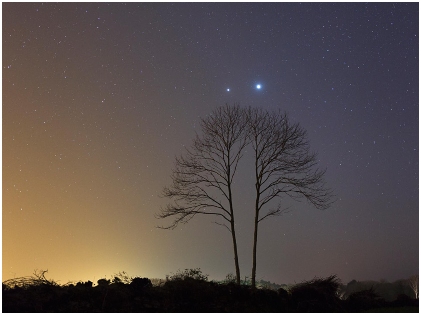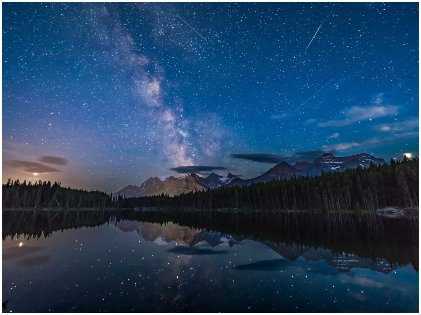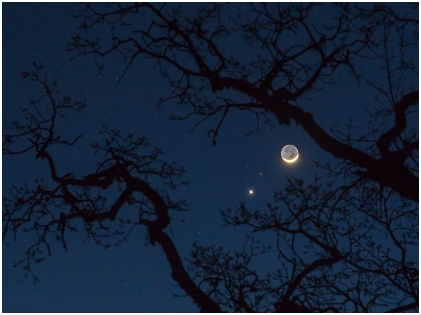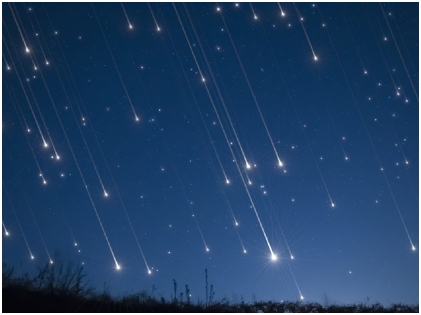The ongoing coronavirus pandemic has forced us to lock ourselves down at our places even at the beginning of 2021. The year-long social isolation only means there are fewer chances of having outdoor fun, especially enjoying the vibrant nightlife of the city. But thankfully there’s something exciting we could easily do without leaving our houses, which is stargazing at night. From Halloween blue moon to a mesmerizing view of Mars, the skies of 2021 won’t fail to amaze us. Here are the five celestial phenomena of 2021 for you.
February 11: The Co-Occurrence of Venus and Jupiter
 If you’re not an early riser, then make a habit of it as on 11th February you can experience a unique celestial incident. On this date, Venus and Jupiter will come in such a close position to each other that it can be viewed by a backyard telescope easily. Even if you are lucky enough then it can be visible to your naked eyes.
If you’re not an early riser, then make a habit of it as on 11th February you can experience a unique celestial incident. On this date, Venus and Jupiter will come in such a close position to each other that it can be viewed by a backyard telescope easily. Even if you are lucky enough then it can be visible to your naked eyes.
The fun doesn’t stop here, as planet Saturn will also become noticeable drifting to the upper right of the pair. But you gotta wake early before the sunrise to see this amazing natural phenomenon. The planet trio will be apparent at the southeast horizon and will remain there for approximately 20 to 30 minutes only. Stargazers living in the Southern Hemisphere will get the best view of this.
March 9 – 10: The Amazing Quadruple Formation of Four Planets
 Another rare cosmic view is on the card right after the aforementioned event. This time it’s a huddle of four partners upon the sky, visible through the nake eyes almost clearly. The early rising habit might reward you this time too, as Saturn, Jupiter, Mercury, and a crescent moon, all will be coming to a near-perfect alignment to form a fantastic quadruple formation.
Another rare cosmic view is on the card right after the aforementioned event. This time it’s a huddle of four partners upon the sky, visible through the nake eyes almost clearly. The early rising habit might reward you this time too, as Saturn, Jupiter, Mercury, and a crescent moon, all will be coming to a near-perfect alignment to form a fantastic quadruple formation.
You can easily recognize Jupiter being the brightest of them all, whereas the crescent shape of the moon will frame the spectacular view. This time you might not need any telescope as the phenomena will be visible through binoculars or naked eyes.
June 10: The Ring Of Fire
 The Ring Of Fire, also known as the solar eclipse, will get visible to the few lucky people who live in the extreme northern hemisphere, specifically a few of the parts of Greenland, Canada, and Russia. While only a handful of people who could make it to the remote path will be lucky enough to watch the full eclipse, the partial solar eclipse can be witnessed by the millions by the rest of the world.
The Ring Of Fire, also known as the solar eclipse, will get visible to the few lucky people who live in the extreme northern hemisphere, specifically a few of the parts of Greenland, Canada, and Russia. While only a handful of people who could make it to the remote path will be lucky enough to watch the full eclipse, the partial solar eclipse can be witnessed by the millions by the rest of the world.
The moon will get into the path of the view of the sun slowly but the small lunar disk will be unable to cover the entire sun, resulting in a spectacular “ring of fire” around the alignment.
July 12: The Conjunction of Venus and Mars
 Another conjunction but this time it is Venus and Mars. On 12th of the June Venus and Mars will move very close to each other to create a double huddle. While Venus and Mars come closer, can the moon be far away? The lovely summer evening will see the faded crescent-shaped moon appearing just above the pair.
Another conjunction but this time it is Venus and Mars. On 12th of the June Venus and Mars will move very close to each other to create a double huddle. While Venus and Mars come closer, can the moon be far away? The lovely summer evening will see the faded crescent-shaped moon appearing just above the pair.
You can use a decent binocular or telescope to witness the occurrence of the trio more precisely while the unaided eye can also enjoy the view comfortably. The dim Mars might be invisible at first due to the shining Venus but if you gaze sharply you could notice Mars.
August 12 and 13: The Shower of Stars
 The large periodic comet Swift–Tuttle goes past earth leaving its cloud of debris. Our planet Earth travels through these small-sized meteors every mid-August generating a shower of shooting stars in the skies.
The large periodic comet Swift–Tuttle goes past earth leaving its cloud of debris. Our planet Earth travels through these small-sized meteors every mid-August generating a shower of shooting stars in the skies.
This amazing natural phenomenon is known as Perseid or meteor shower that appears in the clear skies. This year this would appear in a moonless sky, so if you’re in the northern hemisphere then go to an elevated, less polluted place to witness.
Stargazing has always been fun to some of us. It doesn’t matter whether you’re an avid stargazer or just curious about the celestial objects up there, watching the starry skies is always enthralling. Just like 2020, the current year has so many surprises to offer.





